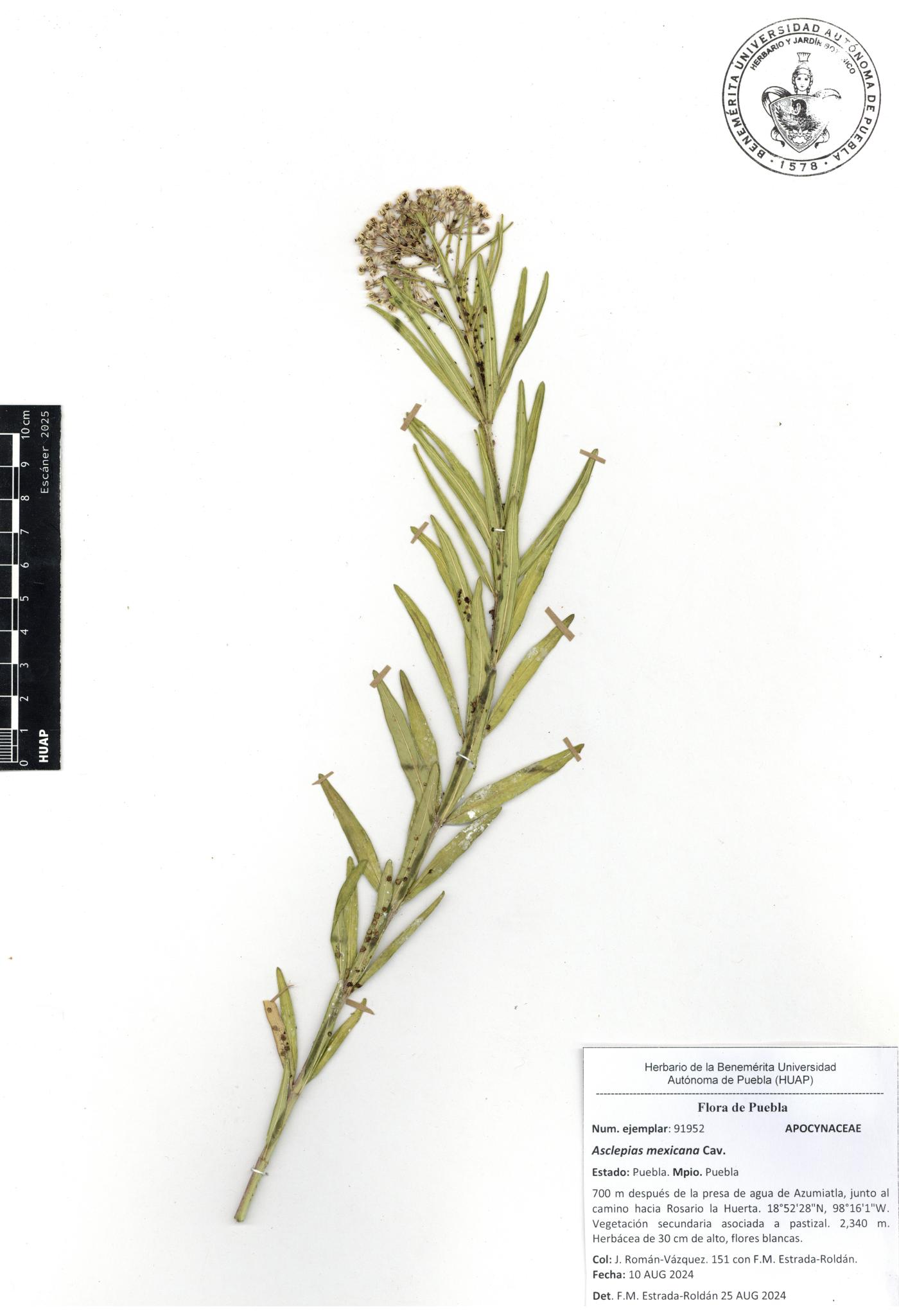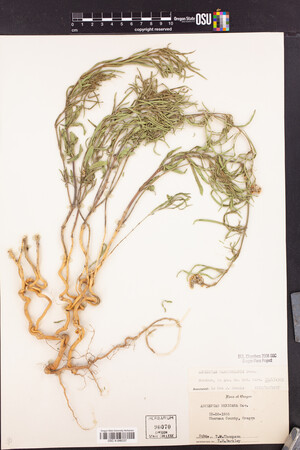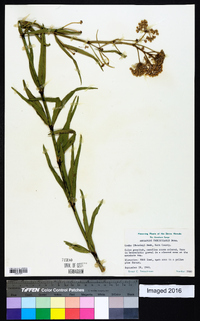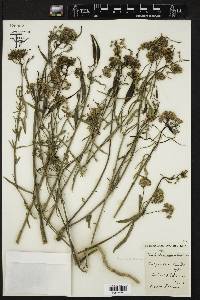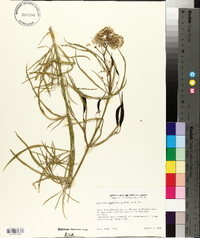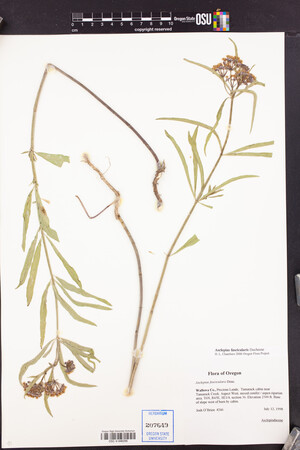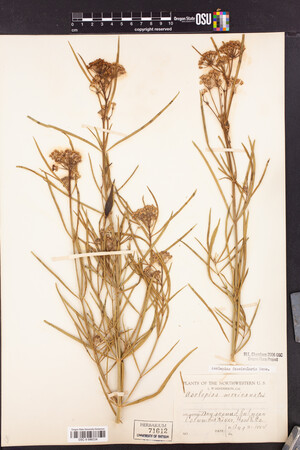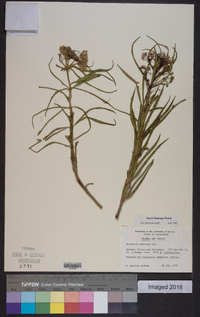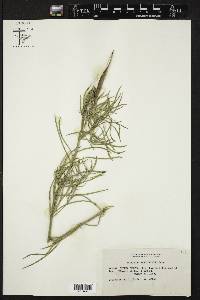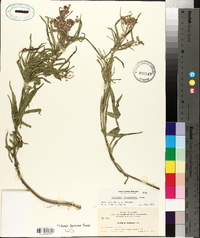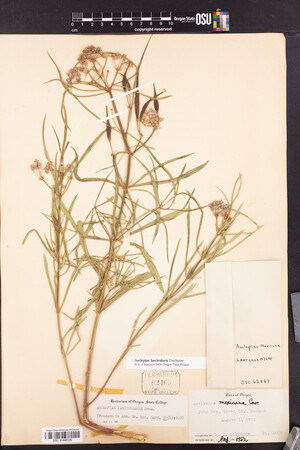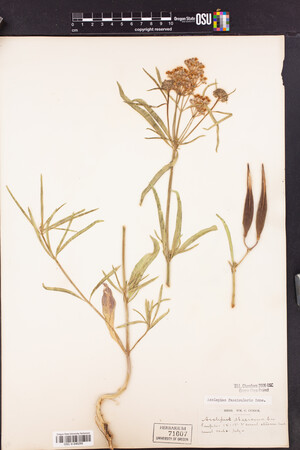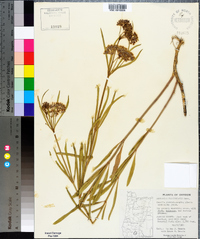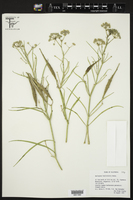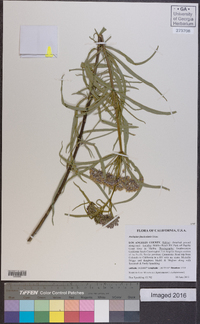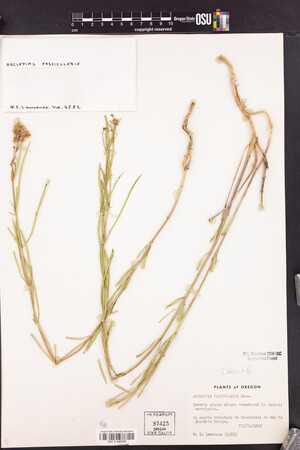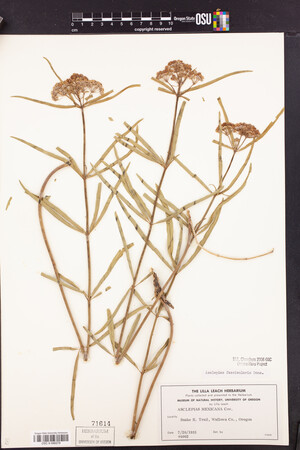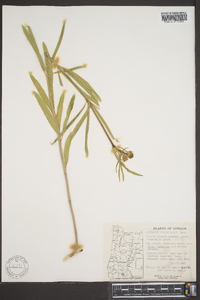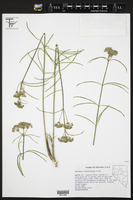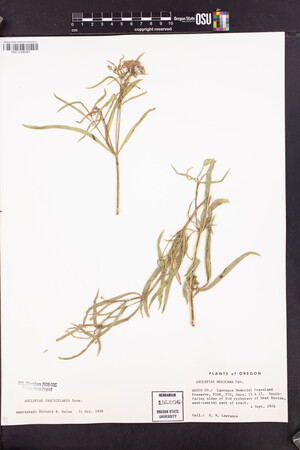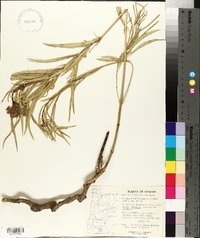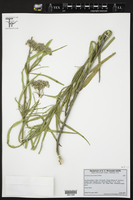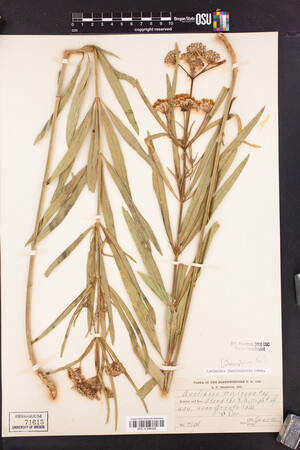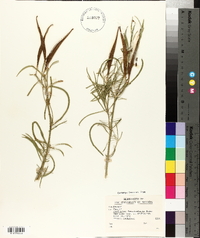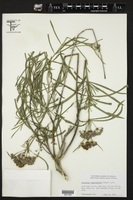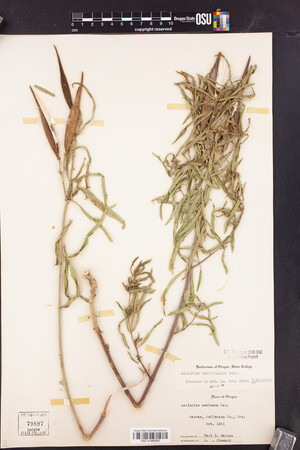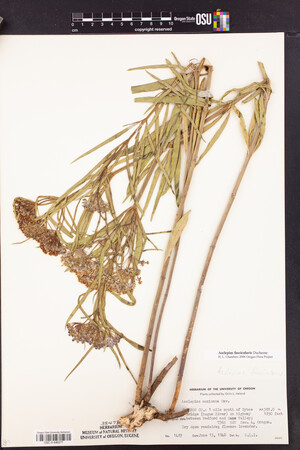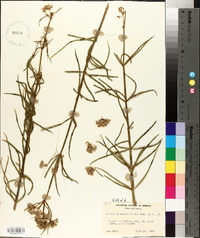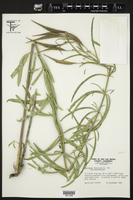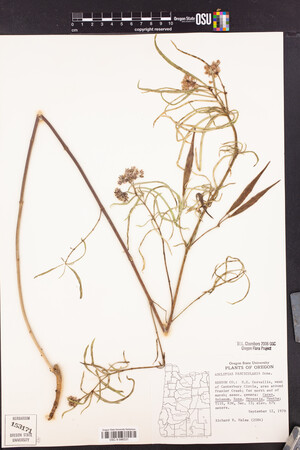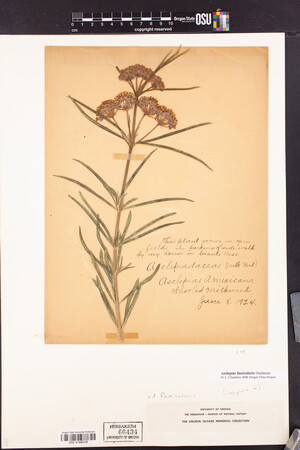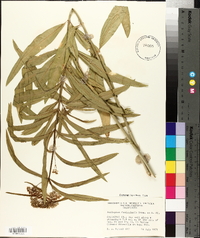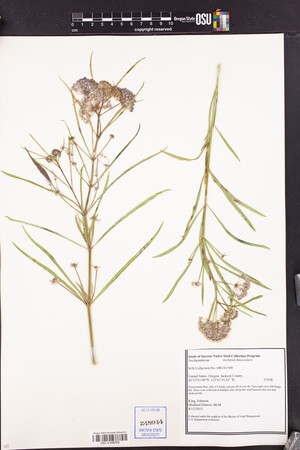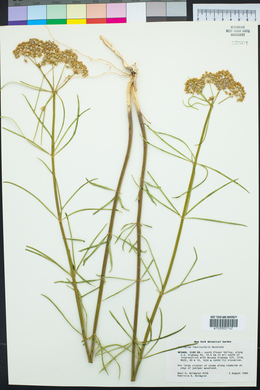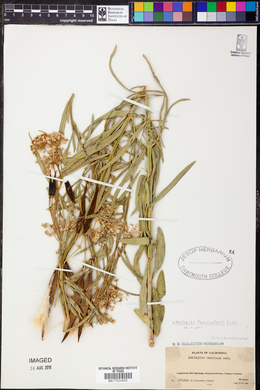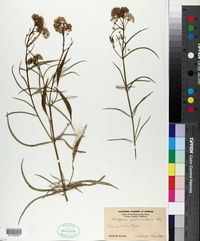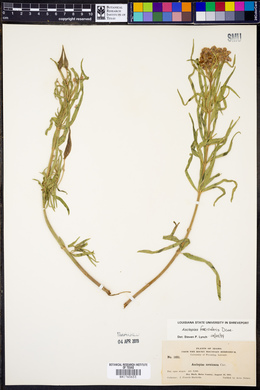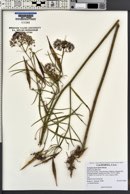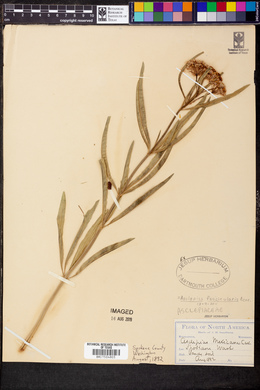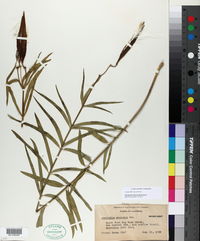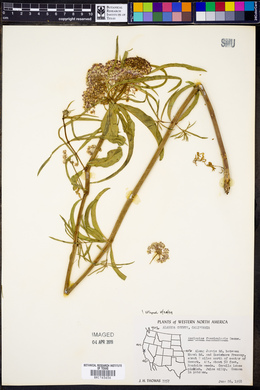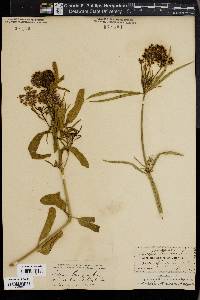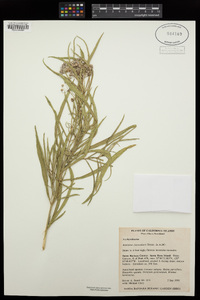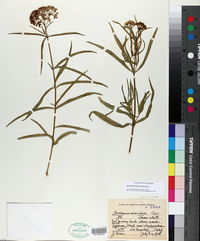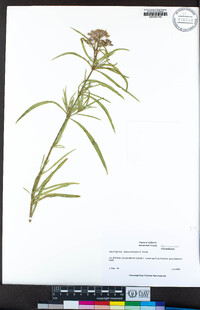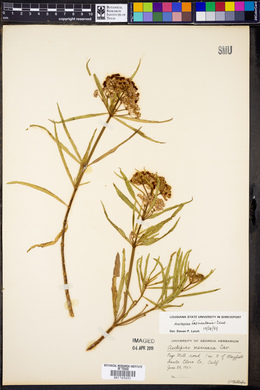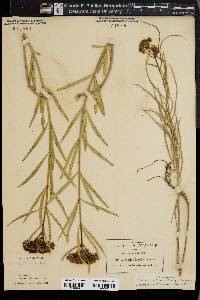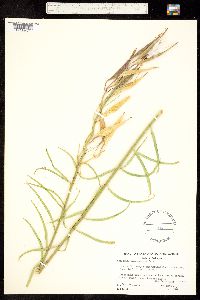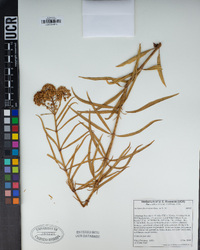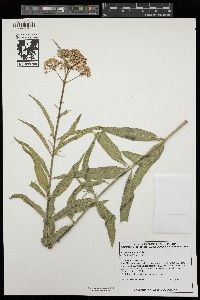Asclepias fascicularis
|
|
|
|
Family: Apocynaceae
Narrow-Leaf Milkweed, more... (es: talayote)
[Asclepias mexicana Cav.] |
Nabhan et al 2015 Duration: Perennial Nativity: Native Lifeform: Forb/Herb General: Erect perennials with smooth stems, to 1 m tall. Leaves: The persistent leaves are whorled with 3-5 leaves at each node, each of these are narrowly linear with a tapered base, these are less than one inch wide but usually smaller and 4.5 inches long, smooth on top. Flowers: In axillary and terminal umbels with many greenish-white and purple tinged flowers. The umbels are rounded on top and made up of numerous flowers with grayish pink to nearly white but greenish corolla. Fruits: The upright pod is smooth and 2-5 inches long and slender, less than a half inch wide. Ecology: Found in a range of soils from moist to very dry sites, from 150 to 7,500 ft (46-2286 m); flowers May through October. Distribution: WA south through CA into Baja California. Notes: This species is a known Monarch host plant. Synonyms: Asclepias mexicana, Asclepias macrophylla, Asclepias fasciculata Editor: AHazelton 2015 Cronquist, A., Holmgren, A., Holmgren, N., Reveal, J., & Holmgren, P. (1983). Intermountain Flora Volume 4—Subclass Asteridae (except Asteraceae). IMF Description: Asclepias fascicularis Decne. Adapted from Intermountain Flora - Plant: Perennial herb; stems 3-8 (10) dm tall, erect or ascending, arising from a wood, often spreading root sotck, often with short, small-leaved lateral non-flowering branches; herbage mostly glabrous or the nodes puberulent; Leaves: leaves whorled, (3) 4 (6) at a node, (3) 5-12 (15) cm long, 2-8 (15) mm broad, linear to linear-lanceolate, acuminate to obtuse apically, tapering gradually to a petiolar base, often folded, those of the sterile dwarf branches much reduced, the petiole 1-3 mm long; Inflorescense: inflorescense villosulous, the umbelliform cymes often paired in the axils of the upper leaves, several to many-flowered, the pedicels 7-10 (15) mm long, the peduncles 1-3 (5) cm long; calyx 1.5-2.5 mmlong, the segments relexed, narrow-lanceolate to lanceolate, villosulous, sometimes sparsely so; corolla (3) 3.5-4.5 mm long, the lobes reflexed , broadly lanceolate, grayish-pink to rose, rarely white; column 1-1.3 (1.5) mm high, 0.5-0.9 mm thick (pressed specimens); hoods (1.2) 1.7-2.2 mm long, ovate, erect, cucullate, grayish-pink or white, the stipe 0.2-0.4 mm long; horn exserted from the hood, 1.7-2.8 mm long, acicular, incurved, attached basally in the hood; anther-head 1.4-1.7 mm high and wide; Fruit: follicle 6-9 (12) cm long, glabrous, smooth, erect pedicel; seeds 5.5-7 mm long; 2n=22. Cronquist, A., Holmgren, A., Holmgren, N., Reveal, J., & Holmgren, P. (1983). Intermountain Flora Volume 4—Subclass Asteridae (except Asteraceae). 3. Leaves mostly opposite but sometimes 3 or 4 at some nodes, lanceolate to narrow-lanceolate, (5) 10-25 (60) mm broad; anther-head 1.7-2.3 mm high.................................................A. incarnata 3. Leaves, at least most of them, whorled, the main leaves linear to linear-lanceolate, 1-8 (15) mm broad; anther-head 1.3-1.7 mm high..........................................................................................4 4. Inflorescences often paired in the upper nodes; corolla-lobes grayish-pink to rose, rarely white' column 1-1.5 mm high; ................................................................................A. fascicularis 4. Inflorescences usually solitary in the upper nodes; corolla-lobes white, sometimes yellow to cream or purple-tinged; column 0.6-1.1 mm high;....................................................A. subverticillata |

